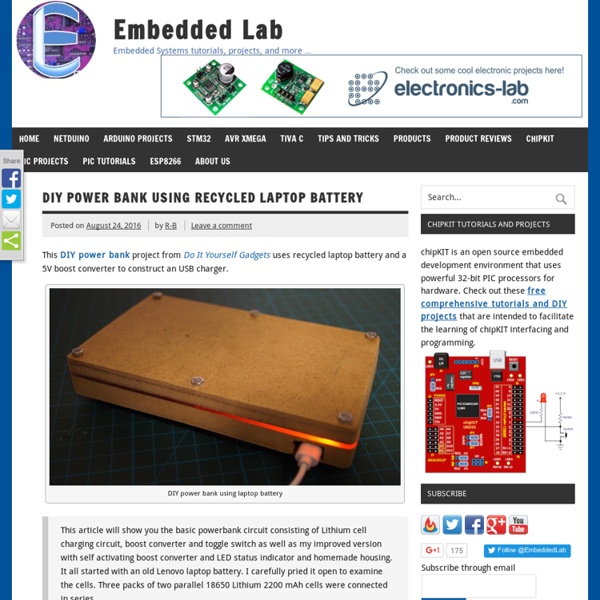



Main Page - Firmata Electrical Engineering News, Resources, and Community | EEWeb MIDIsense This photo has notes. Move your mouse over the photo to see them. MIDIsense is a simple, yet extensible sensor interface system for artists, musicians and others interested in experimenting with sensors. While there are other projects with similar functionality, this one is the most technically advanced, flexible & inexpensive. This project is still in "beta" that means that it works well and has been tested but there are still bugs that pop up and the documentation may be incomplete. This project is supported by EYEBEAM (thanks!) If you have any questions/comments, feel free to ask on the Forum Instead of having one generic board that handles all kinds of sensors, with extensive configuration required, there are 3-4 different boards. Why am I doing it this way? Right now only the resistive sensor board has been released, the other boards are designed but haven't been kitted...The others will be ready to go once I've verified that this system works well for people.
3GPP How to Choose the Right Platform: Raspberry Pi or BeagleBone Black? This article was originally posted at Michael Leonard’s blog and has been re-posted here. There are already many articles out there comparing Arduino, Raspberry Pi, and BeagleBone Black; this is not one of those articles. I believe it is clear that Arduino is in a different league than the Raspberry Pi or BeagleBone Black, and serves an entirely different purpose. What I was looking for and couldn’t find was a comprehensive article that would summarize all of the pros and cons of the Raspberry Pi and the BeagleBone Black, and what each platform is best suited for. I begin this comparison by giving a short introduction to each platform and then we will take an in-depth look at the two platforms side-by-side to determine which one is best for each category. Raw ComparisonUnboxingEase of SetupTotal CostConnectionsProcessor ShowdownGraphical ShowdownAudio ShowdownPower ConsumptionExpandabilityHardware AccessibilityCommunity Let’s get started! About the Raspberry Pi Top of Raspberry Pi Unboxing
cuarto de comunicaciones tino/pyFirmata Revista dedicada a las tecnologías y elementos de conexión y conectividad. Incluye secciones de novedades, análisis de productos y artículos relacionados. Fibra optica, conectores, profresionales, revista, magazine, online Software Selection - Getting Started Software Selection Most hobbyist and commercial users, as well as some educational users, program the PICAXE chip using the easy to learn BASIC language. This language is designed to allow users without any formal programming experience to be able to quickly and simply develop PICAXE microcontroller programs. PICAXE BASIC is much simpler to learn (and to 'debug') than traditional microcontroller languages such as assembler code or 'C'. Windows users should select the PICAXE EditorMac and Linux users should select AXEpad The PICAXE Editor software also includes a very useful on-screen simulation mode, where programs can be tested and ‘stepped through’ before downloading to the chip. Education Most educational users in high schools use the flowchart programming method, using the award winning ‘Logicator for PICAXE’ or PICAXE Editor 6 flowcharting software. Logicator is also available free of charge for individuals who wish to use it at home. More details... Circuit Simulation and PCBs
Raspberry Pi, mini computers, Android and microcontrollers General electronics Handling LCD displays via USB UART from your computer - How to control displays from computers via serial UART communications in PythonRemote programming of mini PC like Raspberry Pi or Beaglebone Black - How to use SSH, SSHFS and VNC/RDP to remotely programm and operate an mini PC from another PC. Micro Python and pyboard Micro Python and pyboard - a Python running on a microcontroller scripts your electronics - How doeas a Python works on a microcontroller and what features pyboard board can offer us?PyBoard and MicroPython in examples - scripting electronics with Python - How to use various electronic and electric parts with PyBoard - like DC and stepper motors, I2C devices, relays and sensorsUpdating pyboard firmware for latest MicroPython features and fixes - Using analog joystics and precise PWM control for running DC motors. Raspberry Pi Benchmarking Raspberry Pi performance - How does Raspberry Pi compares to other computers in terms of performance? Android pyMCU
Bus Pirate From DP Bus Pirate v3.6 available now for $30.15, including worldwide shipping Bus Pirate v3.6 is also available at Adafruit Industries (USA) EpicTinker (USA) Watterott Electronic (Germany) Evola (Europe) Anibit (USA) Hackaday (USA) The Bus Pirate is an open source hacker multi-tool that talks to electronic stuff. It's got a bunch of features an intrepid hacker might need to prototype their next project. Read about the Bus Pirate v3 design; the v3b update; and the v3.5 update. An initial batch of Bus Pirate v4 is now available to early adopters and testers. Introduction Features Features overview (original) Hardware Tutorials Forums Bus Pirate forums Linux, OS X Download Unfortunately it seems that Dangerous Prototypes have abandoned the Bus Pirate firmware development (and the Bus Pirate v4 also), despite that their official firmware has never reached a truly stable state: the quantity of bug report threads at forums, especially regarding flashrom, is a direct proof of that. Contains: Reference Mods